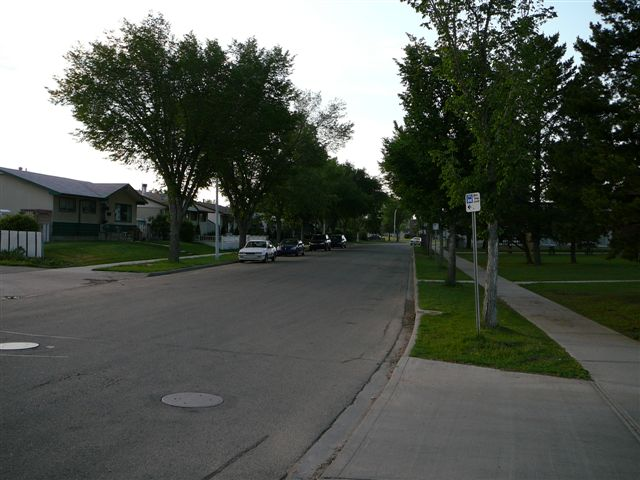How to Save for a Down Payment Fast!
Buying a home is a major life goal for many people, but saving up for a down payment can be a daunting task. It’s not uncommon for lenders to require a down payment of 5% of the purchase price of a home, which can add up to tens of thousands of dollars. But don’t let that discourage you! With some careful planning and a little bit of discipline, you can save up for that down payment and make your dream of homeownership a reality. Here are some tips to get you started:
1. Create a Budget for Yourself with Everyday Spending
The first step to saving up for a down payment is to create a budget for yourself. Take a good look at your everyday spending habits and identify areas where you can cut back. This could mean bringing your lunch to work instead of eating out, brewing your own coffee instead of buying it, or canceling subscriptions that you don’t use. Every little bit counts!
Put Away 15-25% of your Paycheck into a Separate Account
Once you’ve identified areas where you can cut back, it’s time to start putting that money into a separate savings account. Aim to put away 15-25% of each paycheck into this account. If you’re finding it difficult to save that much, start with a smaller percentage and gradually work your way up. The key is to make it automatic, so you don’t even have to think about it.
Rent Rooms in your House or your Basement
If you have a spare room in your house or basement, consider renting it out for some extra income. This can be a great way to earn some extra cash and put it towards your down payment fund. Just make sure to screen potential tenants thoroughly and set clear expectations upfront.
Get a Savings Account Where it Banks the Change
Some banks offer savings accounts that “bank the change.” This means that every time you make a purchase, the account rounds up to the nearest dollar and puts that change into your savings. It might not seem like much at first, but it adds up over time. Look into whether your bank offers this type of account and consider opening one up.
Day Trade
If you’re feeling a bit more adventurous, you could try day trading. This involves buying and selling stocks or other investments within the same day in order to make a profit. Just make sure to do your research and only invest what you can afford to lose.
Save your Tax Return
Instead of blowing your tax return on a vacation or shopping spree, put that money towards your down payment fund. It might not be the most exciting use of your tax return, but it will help you get closer to your goal of homeownership.
Pay off High-Interest Debt
If you have high-interest debt, such as credit card debt, it’s important to prioritize paying it off. Not only will it save you money in the long run, but it will also free up more money that you can put towards your down payment fund.
Don’t Upgrade your Vehicle
It can be tempting to upgrade your vehicle or buy a new one, but resist the urge if you’re serious about saving for a down payment. Instead, stick with your current vehicle or look for ways to save on transportation costs, such as carpooling or taking public transit.
Sell a Toy (like a motorcycle or camper)
If you have a toy, such as a motorcycle or camper, that you’re not using, consider selling it to put some extra cash towards your down payment fund. It might be tough to part with something you love, but it will be worth it in the end when you’re sitting in your own home.
Invest in Dividend-Paying Stock
Investing in dividend-paying stock can be a good way to guarantee you will have some kind of return on investment!
Use your TFSA for All Savings and Investments
A Tax-Free Savings Account (TFSA) is a great tool for saving and investing money. The money you contribute to a TFSA grows tax-free, which means you don’t have to pay taxes on the growth. Plus, you can withdraw the money at any time without penalty. Consider using your TFSA for all your savings and investments, including your down payment fund.
Maximize Work Contributions, like RSP Contributions
If your employer offers a retirement savings plan, such as a Registered Retirement Savings Plan (RRSP), consider maximizing your contributions. Not only will this help you save for retirement, but it can also lower your taxable income, which means you’ll pay less in taxes. Just be aware that there are penalties for withdrawing money from an RRSP before retirement age.
Invest with a Partner in a Joint Venture
If you have a friend or family member who is also saving up for a down payment, consider investing together in a joint venture. This could be a real estate investment or a rental property, for example. Just make sure to have a clear agreement in place to avoid any potential conflicts down the road.
Get a Second Job and Use your Talents
If you’re serious about saving up for a down payment, consider getting a second job or using your talents to earn extra money on the side. This could be anything from freelance writing or graphic design to snow shoveling or pet sitting. The key is to find something that you enjoy and that fits with your schedule.
Stay Motivated and Celebrate your Progress
Saving up for a down payment can be a long and challenging process, but it’s important to stay motivated and celebrate your progress along the way. Set small goals for yourself and reward yourself when you reach them. This could be something as simple as treating yourself to a nice meal or taking a weekend getaway. Whatever it is, make sure to celebrate your hard work and keep pushing towards your ultimate goal of homeownership.
In conclusion, saving up for a down payment for a home requires some careful planning, discipline, and creativity. By creating a budget, putting away a portion of your paycheck, renting out a spare room, and exploring other income streams, you can make steady progress towards your goal. Remember to stay motivated and celebrate your progress along the way. With determination and persistence, you can make your dream of homeownership a reality!
Here are some Pros and Cons of Buying a Home vs. Renting
Pros of Buying a Home
- Build Equity: When you make mortgage payments, you are paying down the principal on your loan and building equity in your home. This can be a great investment in the long term, as you’ll have the opportunity to sell your home for a profit or use your equity for other investments.
- Stability: Owning a home provides a sense of stability and permanence, as you can stay in your home as long as you’d like (or until you choose to sell).
- Freedom to Customize: When you own your home, you have the freedom to customize it to your liking. This can include renovations, landscaping, and more.
- Tax Benefits: Homeowners can deduct mortgage interest, property taxes, and other expenses from their taxes, which can provide significant savings.
Cons of Buying a Home
- High Upfront Costs: Buying a home requires a significant amount of upfront costs, including a down payment, closing costs, and other fees.
- Maintenance and Repairs: As a homeowner, you are responsible for all maintenance and repairs on your home. This can be expensive and time-consuming.
- Less Flexibility: If you need to move for work or other reasons, selling a home can be a complex and time-consuming process.
- Market Risk: Real estate markets can be volatile, and the value of your home can fluctuate depending on the economy, housing trends, and other factors.
Pros of Renting
- Flexibility: Renting provides more flexibility than owning a home, as you can easily move when your lease is up.
- Lower Upfront Costs: Renting typically requires less upfront costs than buying a home, as you typically only need to pay a security deposit and first month’s rent.
- No Maintenance or Repair Costs: As a renter, you are not responsible for any maintenance or repair costs on the property.
- No Market Risk: Renting provides protection against market risk, as you are not investing in real estate.
Cons of Renting
- No Equity Building: When you rent, you are not building equity in a property. This means that you are not investing in a long-term asset that could potentially appreciate in value.
- No Customization: Renters typically do not have the ability to customize their living space, as landlords often restrict renovations and other changes.
- No Tax Benefits: Renters do not have the same tax benefits as homeowners, as they cannot deduct any expenses related to their living space.
- No Stability: Renting provides less stability than owning a home, as landlords can choose to not renew your lease or increase your rent at any time.
Ultimately, the decision to buy or rent depends on your personal financial situation, goals, and lifestyle. It’s important to carefully consider all factors before making a decision.



